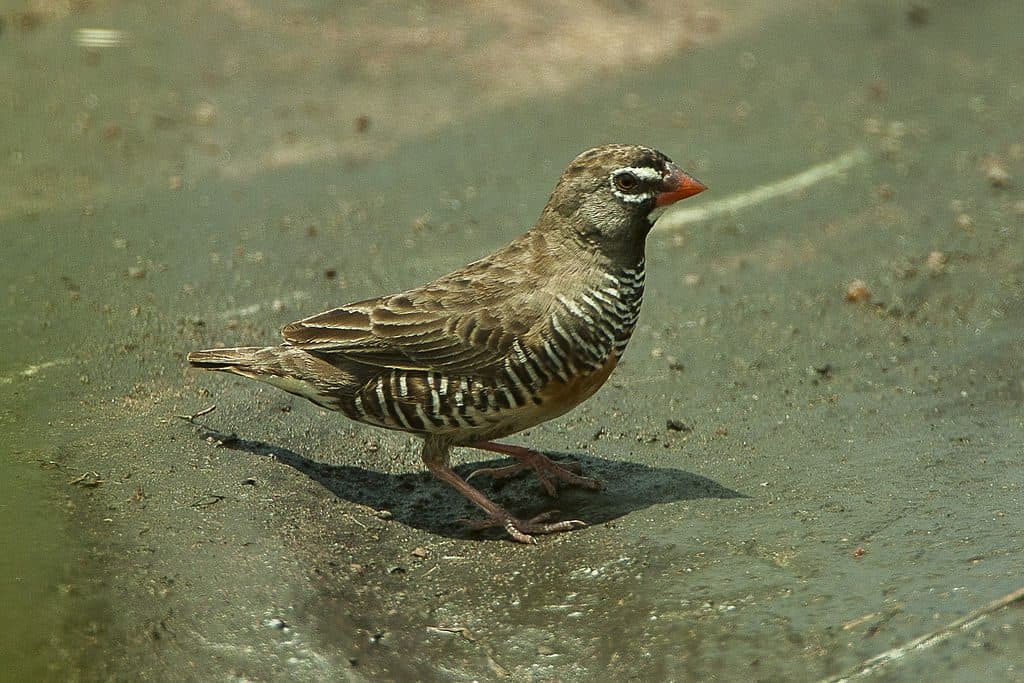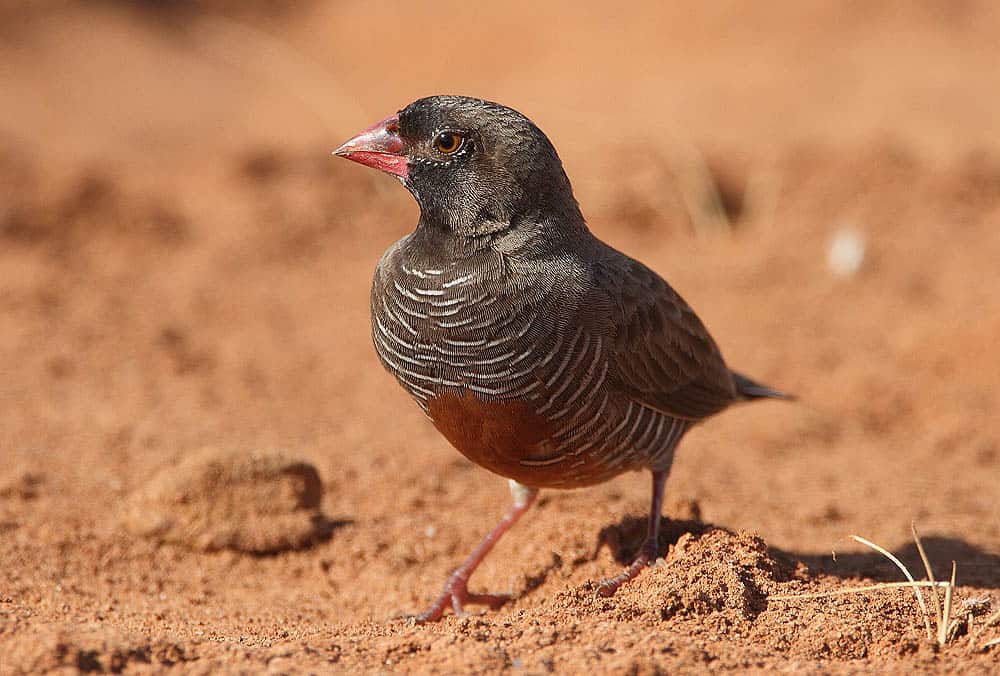The exotic finch family does include many shapes and sizes but one of the more intriguing members are the quailfinches. There are three or four species in the family, depending on the authority, and they have the look of a quail while being a finch. So, who are these birds and what makes them different?
Family members
The quailfinch family, Ortygospiza, is a member of the Estrildidae family so this means the birds are related to other common aviary birds such as Zebra Finch and Gouldian Finch. There are three species of qualifinch and a fourth species, the Locust Finch, that is either part of the same family or in a family of their own – taxonomists seem a little uncertain about this.
The family members are:
- Black chinned quailfinch (O. gabonensis)
- African quailfinch (O. fuscocrissa)
- Black faced quailfinch (O. atricollis)

Generally, these birds are desert birds, seen in small flocks in the wild or in pairs in open areas with some grass growth such as sandy grassland, marshes as well as farmlands – anywhere that there is a source of water as well as food. Part of their name comes from their appearance but another part of it comes from a behaviour when they encounter humans in the wild – they freeze then burst upwards, much like quails or partridge do.
Keeping quailfinch species
As African birds, quailfinches do need to be kept warm in northern hemisphere winters. Some breeders recommend no lower than 19 degrees, although the situation where they were raised could have some impact on this. Cold and draughts can be fatal to these birds so protection and heating is crucial.

These birds are a little more difficult than other species in the Estrildidae family so some experience is advisable before trying with them. They are ground feeders who will hunt around on the floor for their food and therefore an aviary is the best option for them. Some breeders recommend putting some kind of sheeting on the roof to prevent them hitting it and injuring themselves.
Because they spend a lot of time on the ground and are small birds, they are naturally quite nervous so adding features to their aviary helps to make them feel safe. Dried or live grass is ideal, even fake plants mimicking this. You can also add tree stumps, rocks and lower perching areas.
The basic diet for these birds include a good foreign finch seed mix as well as additional grass seeds to mimic their natural diet. They will usually eat egg food and sprouted seeds as well as insects. Allowing insects to burrow into the sand can replicate their natural hunt for food and stimulate the birds.
Breeding quailfinches
One of the reasons that the quailfinches are different to most species of finch is their preference for nesting on the floor rather than in nesting boxes on walls or in trees. This can make them difficult to keep with real quail or other floor dwelling birds that can disturb them.
They need a flat space that is a little similar to their natural habitat, so desert with a little grasses and randomly placed stones. You can add some sand to help mimic this and simply change it periodically.
In addition to their normal diet, quailfinch also require live food to stimulate breeding and also to feed their young. Waxworms and mealworms are examples of the kind of live food they might accept. Sprouted seed is also important to add to the diet around breeding time.
When breeding, season comes around, they will use dried grass for their nest such as coconut fibres as well as feathers for nest liners. They will then build a nest on the floor and 4-6 eggs are typical. Resist the urge to check the nest as this will likely lead to abandonment. Young hatch in around 12 days and fledge at 2 weeks. It takes around a month after this to be fully weaned. The young can be very random in their flight when juvenile so care should be taken to avoid injury.
Further reading: